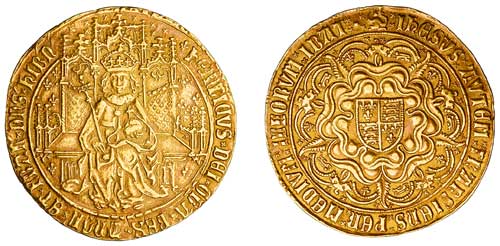The pound sterling originated in Anglo-Saxon Britain during
the 8th century (775/780AD) when the basic monetary unit, called a 'sterling',
was made equivalent to 1/240th of a pound of silver (a penny). 240 sterlings
became known as a 'pound of sterling'. It was to be 700 years before a pound
coin was first issued.
The first pound coins were hammered in 1489AD during the
reign of Henry Tudor (King Henry VII) to help England recover from the ravages
of Civil War. They were magnificent 23¾ carat (99%) gold coins carrying an obverse
design of the King enthroned in majesty, giving the coins their name -
'sovereigns'. The reverse design was a shield on a Tudor rose. Their value was
the equivalent of 240 silver pennies or 20 shillings (the shilling as a coin
denomination did not appear for another 59 years until 1548).
By 1526, a drain of gold to continental Europe led King
Henry VIII to increase the sovereign's value by 10% - to the equivalent of 22
shillings. A few months later its value was increased again to 22s 6d, a value
at which it remained until 1544 when a process of 'debasement' saw the
sovereign's fineness reduced initially to 23 carats, then to 22 carats a year
later and not long afterwards to 20 carats. During this period, the value of
the sovereign was reduced to 20 shillings once more. In 1549, King Edward VI
raised the gold fineness to 22 carat (91.6%).
Source: australianstamp.com | img source: coins-of-the-uk.co.uk

No comments:
Post a Comment